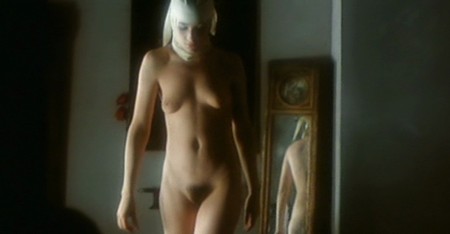
Walerian Borowczyk’s erotic films all typically engage in an aesthetic discourse with nineteenth century texts, often as a means of examining the consistencies of our cultures’ fetishes. Borowczyk’s approach to adaptation is to essentially strip the source material down to nothing but the action and determine the most efficient image to convey the information of that action. No doubt Borowczyk took the same approach when adapting Stendhal’s Promenades dans Rome into Behind Convent Walls (1977).
This of course speaks to the hallmarks of Borowczyk’s style as a filmmaker. His live action films, erotic or otherwise, all take a minimalist approach to narrative form and to character. His focus is on capturing in images the space, the period, and the atmosphere of the film. His camera is highly observational, often hand-held, as it pans and zooms in on objects and bodies motivated only by the filmmaker’s whims and fancies. This gives Borowczyk’s films the effect of being drawn out, animated tableaus. Each vignette or episode within that tableau builds upon the last until finally a tension, no matter what kind, is released in one frenzied moment at the end of a film. When this approach is tied to the kinds of erotic themes that make up Behind Convent Walls the end result is unique within the world of European erotic cinema.
Borowczyk always films the taboo as common place, and Behind Convent Walls is no exception. The premise is simply that an abbey of nuns, after being stymied in their erotic pursuits by their mother superior for too long, poison her and the culprits commit suicide. Interestingly the spectacle of Behind Convent Walls isn’t primarily one of sexual intercourse but rather of desperate longing. For example, every shot of a wood carved dildo being inserted into a vagina is matched with shots of trembling fear in the users eyes and then followed by a sequence of shame, punishment, frustration, and anger at the hands of the Mother Superior. This complex of causality within the narrative locates the central contradiction of the Catholic faith. Borowczyk’s Catholic upbringing in Poland echoes through his erotic films in similar ways, but never is he so explicitly subversive of Catholic doctrine.
As is typical of “nunsploitation” films, Behind Convent Walls dramatizes the conflict between sex and faith; where fulfillment of one precludes fulfillment of the other. But Behind Convent Walls is more successful than most in giving this conflict depth primarily because of the aesthetic structures Borowczyk puts in place. When those structures are paired with his obsessively historically accurate production design the film transcends the milieu of sexploitation and becomes legitimate erotic art.
